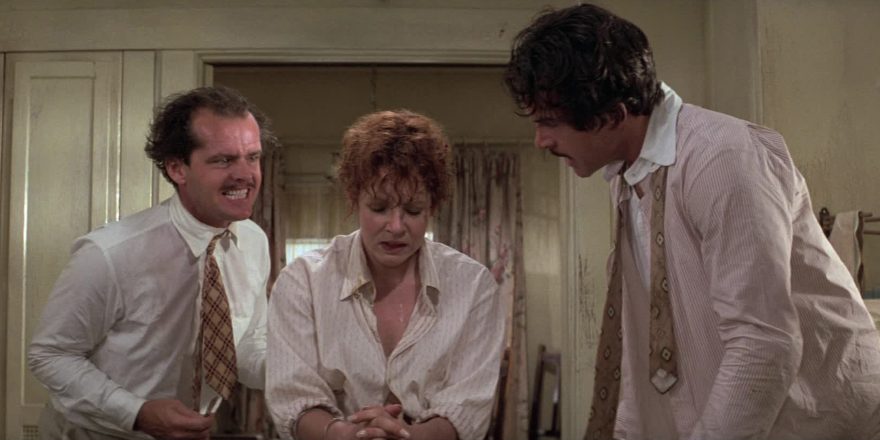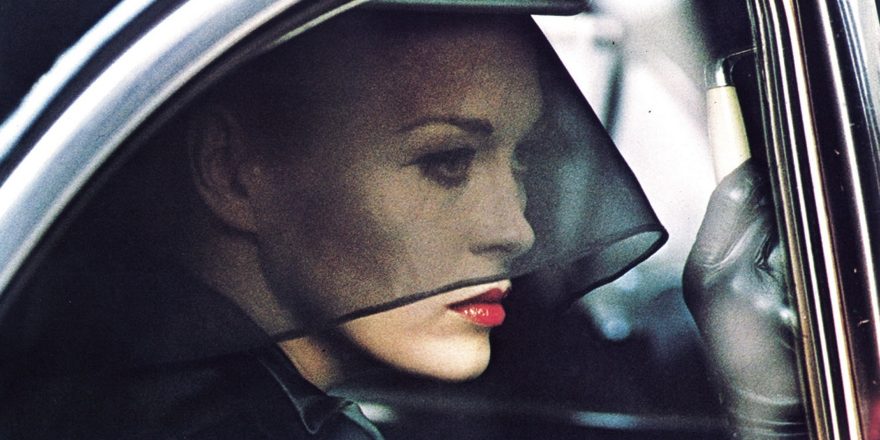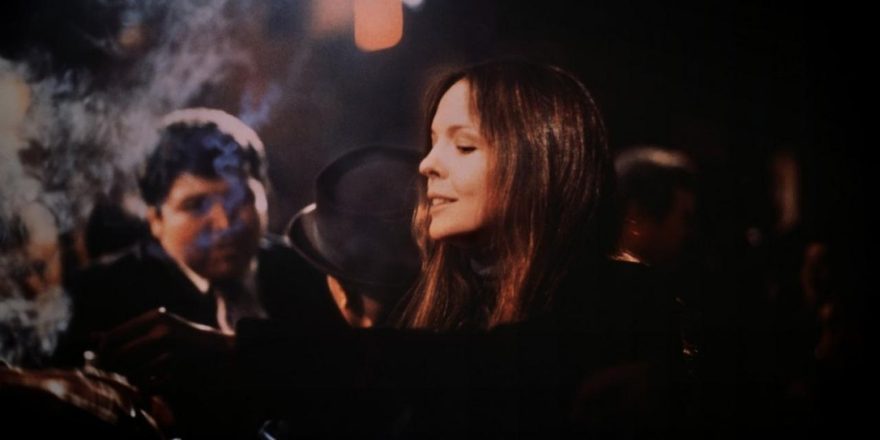Mike Nichols isn’t necessarily one of my favorite directors, but I do have a soft spot for The Fortune. Of course, Who’s Afraid of Virginia Woolf? is pretty much a masterpiece, and Catch-22 and Carnal Knowledge have some enthralling scenes and set pieces, but neither quite hangs together. One could argue that those two films, plus The Graduate, even have a certain misogyny underlying their slick surfaces. As much as I love Ann Bancroft and Katherine Ross, whose turns in The Miracle Worker and The Stepford Wives, respectively, represent two of the strongest feminist statements of their eras, their roles in The Graduate hardly represent a triumph for the women’s movement. (If only Ben had run off with Mrs. Robinson in the end, and Elaine burned her bra and joined NOW.) And as much as I love Ann-Margret’s performance in Carnal Knowledge, the film’s masculinist demeaning of women is hardly what you would call enlightened. It was only starting in the ’80s that Nichols would get his feminist and queer grooves on, with Silkwood (featuring a star turn by Cher as lesbian nuclear power plant worker Dolly Pelliker), Working Girl (a pop post-feminist confection) and the impressive, if slightly overwrought, Angels in America. (Don’t get me started on The Birdcage, which, although a big fat gay hit, really didn’t strike my fancy at all.)
An argument could easily be made that The Fortune represents an even more overt misogyny, save for the fact that it is written by the extraordinary Carole Eastman (under her regular nom de plume, Adrien Joyce), and that the movie is stolen from Jack Nicholson and Warren Beatty – two of the biggest Hollywood stars of the era – by the effervescent Stockard Channing, in her first billed big-screen appearance, no less. The scenario of The Fortune may seem casually sadistic toward the female character, but in the hands of Eastman and Channing, the film becomes empowering, even subversive, as we shall see.
Considering The Fortune is largely about two men trying to murder a girl for her money, and that it is also pretty much predicated on one big tampon joke, it’s amazing how much feminist verve it actually musters. The running gag is that Channing, as Freddie, is the “Mouse Bed” heiress, the daughter of a wealthy tampon manufacturer. But in the endlessly clever screenplay, Eastman codifies Freddie as masculine – her name, her penchant for wearing men’s clothes (a seventies fad for women) – creating a vaguely “homosexual” attraction between her and her two suitors. Nicholson, as Oscar, and Beatty, as Nicky, are also consistently coded as gay, by the very conventions of the buddy film generally, and by their seeming infatuation with each other and disinterest in the girl they’ve shanghaied. “Je n’existe pas,” declares Freddie in frustration over their neglect of her, and later, “You’re several times more interested in each other than you are in me.” The key to the film may be in Eastman’s own male identification, and her position as a female screenwriter in a largely male-dominated industry. An excellent Film Comment article about Eastman nails the psychology:
If we go looking for little pieces of Eastman’s youth in her films, a scene in The Fortune, in which Stockard Channing’s character Fredrika is discovered amusing herself by dressing in drag, is of interest: “One time, I dressed up in my brother’s clothes. Very late at night, after everyone was asleep, I went promenading around the streets, devil-may-care, y’know, with my hands in my pockets. Of course there wasn’t a soul around to see me — they would’ve packed me off to an alienist — but … I did feel like a real individual.”
It’s not only Freddie’s femininity that is undercut in the film, but also her identification as a wealthy heiress, presented as she is as what might best be described as a Madcap Marxist. “I’m getting the funny feeling that money is all that anybody cares about in this world,” she says wearily, as she begins to become suspicious of her suitors’ motives. In fact, she doesn’t seem to be interested in the material world at all, forming, instead, a rather touching, if peculiar, attachment to a chicken that Oscar gifts her in order to bed her. She seems perfectly content living in squalor in a humble bungalow with her two grifter paramours.
Eastman’s contribution to the film is inestimable, the dialogue having an almost lyrical cadence, as if the whole thing could have played as a musical. It’s also full of great lines. “I’m sick as a mutt,” says Freddie the day after she’s been plied with alcohol and shuffled across the state line. “God, what a night to remember. All a complete blank.” “Let me straighten the picture on the wall for you,” says Nicky, explaining something to the dull Oscar. And later, when Oscar justifies still being in bed in the middle of the afternoon instead of looking for a job: “I’m not lying around. I haven’t got entirely up yet.” Classic Nicholson. Channing also elevates the movie, somehow making even the simple act of brushing her hair funny. But the actual execution of the film, the direction, is left to Nichols, with mixed results, often straining for the urbane sophistication of Ernst Lubitsch, but ending up more in the territory of Mack Sennett. The film is full of ingenious single-take scenes, including the very first shot, a pan down from a mansion to Freddie walking toward the gate where Nicky waits for her in a running car. In another one-shot scene, Freddie is placed on a rolling luggage rack with the rest of the baggage as her suitors prepare to haul her onto a train. Nichols is known for his visually impressive set-pieces – the tango scene here, brilliantly choreographed for the camera, is a great example – but it feels like they interfere at times with the story, or draw more attention to his stylistic interventions than to his characters. It doesn’t hurt, however, that the film is shot by the brilliant John A. Alonzo, fresh off his work on Chinatown.
Ultimately, though, the film rests with Eastman’s exceptional and subversive scenario. From the opening gag, in which, after picking up Oscar, the threesome visit the Justice of the Peace, a tracking shot revealing that it is Oscar, not Nicky, who is marrying the semi-conscious heiress, all bets are off. When Freddie finally comes to on the train, she meets her new husband for the first time. “She’s not as good-looking as your wife, do you think?” Oscar asks Nicky of his new wife when Freddie goes to the powder room. The film consistently posits conventional marriage as a farce, and in its place suggests the ménage à trois (think Lubitsch’s Design for Living), incest (Nicky poses as Freddie’s brother, sending the nosy landlady into paroxysms when she spies on them in bed having sex together) and female sexual masochism (Freddie sleeps with both men, seemingly enjoying the abuse they heap on her). Along with being overtly anti-capitalist, the unorthodox sexual configurations of the film almost guaranteed it would be a flop – which it was when it was released, both critically and commercially. The fact that Freddie abandons her fortune, forsakes the wealthy benefactor who saved her after she washed up on the beach in a trunk in Long Beach, and returns in the end to the two conniving cons who tried to murder her for her estate, completely subverts the traditional Hollywood happy ending, or pretty much any ending of a mainstream film you can think of.
Eastman, who also wrote the screenplays for Five Easy Pieces and Puzzle of a Downfall Child, is not interested in reinforcing any brand of normalcy or traditional values. She imbued every screenplay she wrote with a strong, personal voice and insurrectionary feminist sensibility. Predictably, Hollywood couldn’t seem to cope with Eastman’s genius (ditto Elaine May, whose Ishtar echoes The Fortune). She only wrote two more screenplays that were made into films, leaving behind a trail of unfinished scripts, and unrealized potential masterpieces.






